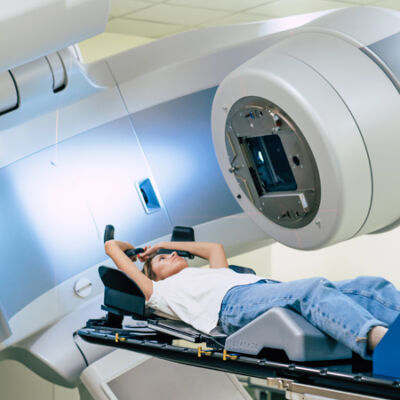radiotherapy
Radiotherapy
Radiotherapy is a type of cancer treatment that uses high-energy radiation to destroy cancer cells. It works by damaging the DNA of these cells, which prevents them from growing and dividing. This can effectively kill the cancer cells and shrink tumors. There are two main types of radiotherapy: external-beam radiation therapy and internal radiation therapy (also known as brachytherapy). In external-beam radiation therapy, a machine outside the body directs radiation at the targeted area. Internal radiation therapy involves placing a radioactive source directly inside or near the tumor. Radiotherapy may be used alone or in combination with other treatments such as surgery, chemotherapy, or immunotherapy. It can also be used before or after surgery to help reduce the risk of recurrence. The side effects of radiotherapy can vary depending on the treatment area and dosage. Common side effects include fatigue, skin irritation, and hair loss in the treated area. These side effects are usually temporary and will improve after treatment is completed. It is important to discuss any concerns or questions about radiotherapy with your doctor. They will work with you to create a personalized treatment plan that takes into account your specific type of cancer, its stage, and your overall health. In addition to treating cancer, radiotherapy can also be used for palliative care. This means using lower doses of radiation to relieve symptoms caused by advanced cancer, such as pain or difficulty breathing. Overall, radiotherapy plays an important role in the treatment of cancer and has helped many patients achieve remission or manage their symptoms. With advancements in technology and techniques, it continues to be a valuable tool in the fight against cancer.Discover the different types of radiotherapy used in oncology in this comprehensive guide. Understand how each method works and its role in cancer treatment.



